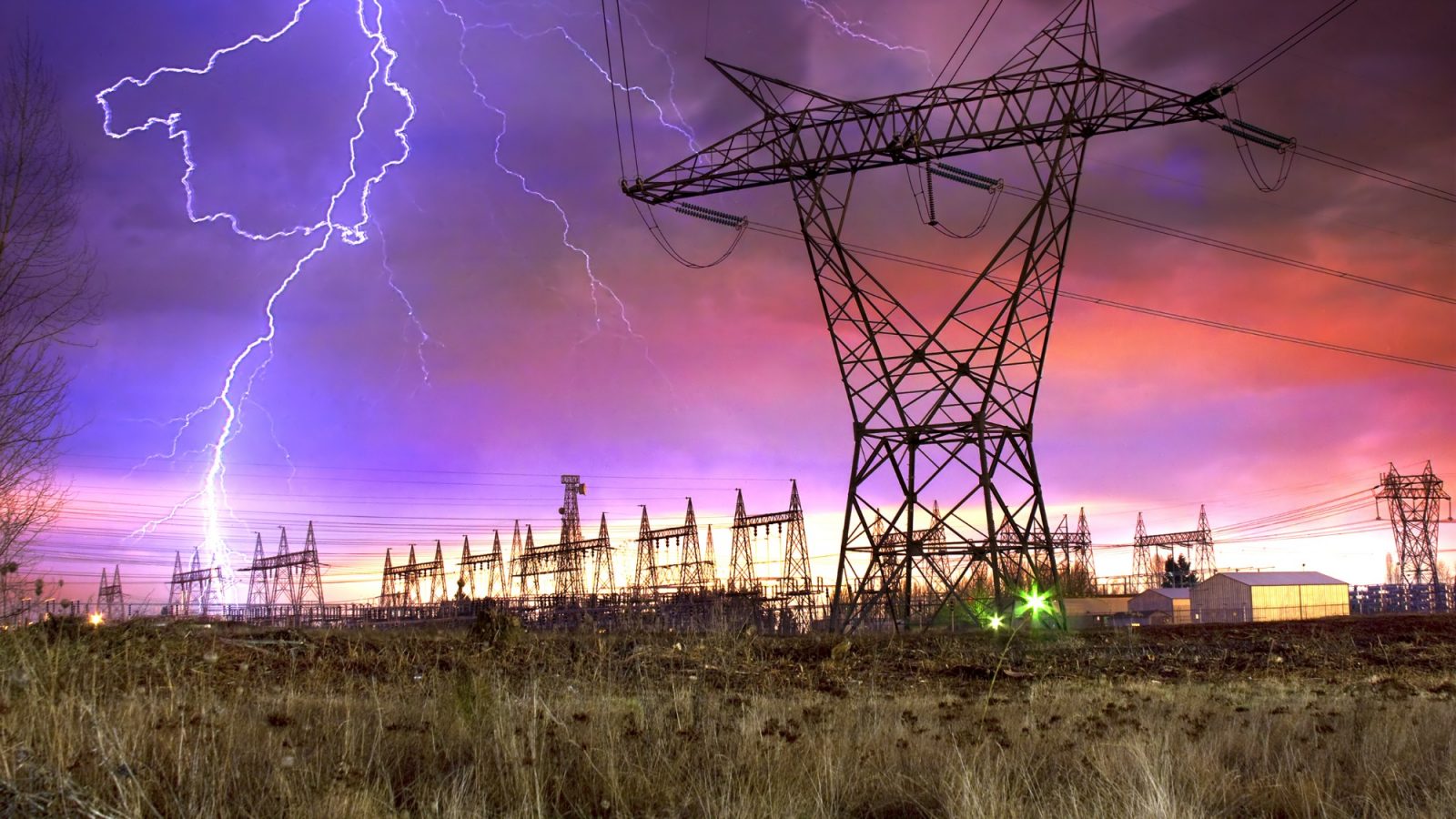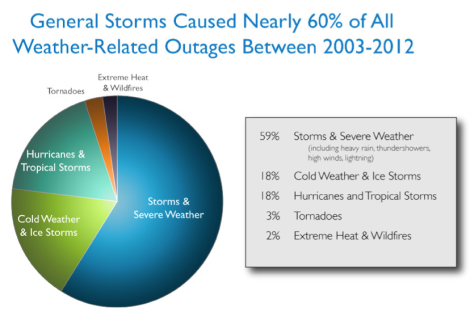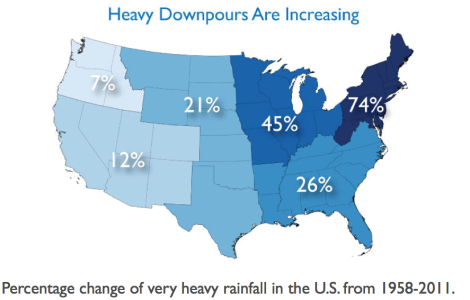The current U.S. electrical grid is a far cry from smart. Climate change and aging infrastructure are leading to an increasing number of blackouts across the country.
A new analysis by the nonprofit Climate Central found that the number of outages affecting 50,000 or more people for at least an hour doubled during the decade up to 2012. Most of the blackouts were triggered when extreme weather damaged large transmission lines and substations. Michigan had the most outages, followed by Texas, Ohio, Pennsylvania, and Virginia.
Severe rainstorms, which are growing more tempestuous as the globe warms, were blamed for the majority of the weather-related outages.
The researchers listed two main drivers of the trend:
Climate change is, at most, partially responsible for this recent increase in major power outages, which is a product of an aging grid serving greater electricity demand, and an increase in storms and extreme weather events that damage this system. But a warming planet provides more fuel for increasingly intense and violent storms, heat waves, and wildfires, which in turn will continue to strain, and too often breach, our highly vulnerable electrical infrastructure. …
Since 1990, heavy downpours and flooding have increased in most parts of the country, and the trend is most dramatic in the Northeast and Midwest. Some of this heavy rain is likely to be associated with high winds and thunderstorm activity. Researchers have found that these regions have already seen a 30 percent increase in heavy downpours compared to the 1901-1960 average.
Solutions to the problem include more small wind and solar power installations built close to where the electricity is needed — and an overhaul of the country’s overburdened and outmoded grid system.
This research won’t come as a surprise inside the White House. The Obama administration put out a call for more spending on grid infrastructure last year when it published similar findings in its own report.






